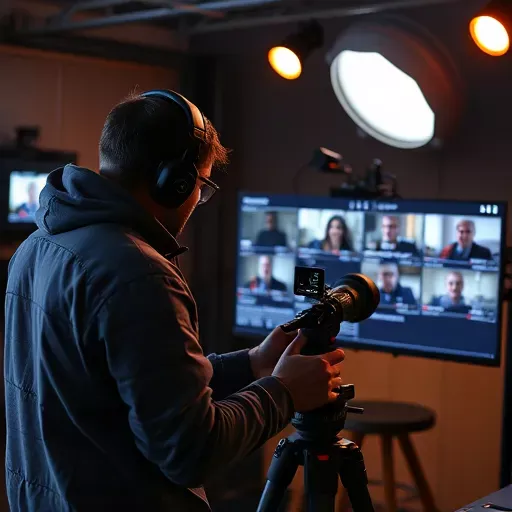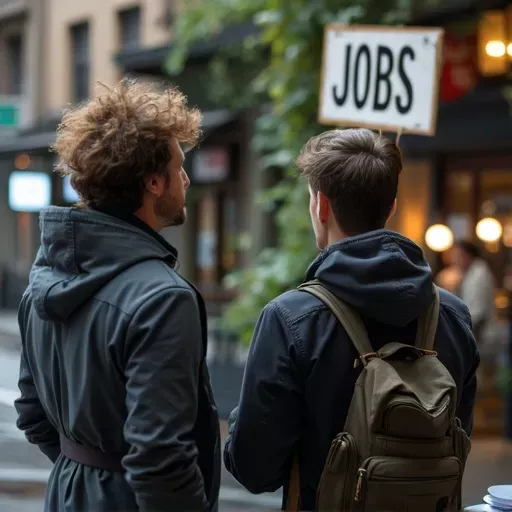Imagine a world where creating a Hollywood-quality film is as simple as typing a few sentences. Sounds like science fiction, right? Well, thanks to incredible progress in AI video generation, that future is closer than you think.

We’re talking about a time when AI-made videos are so good, you won’t be able to tell them from real footage. This isn’t just a cool tech trick; it’s a massive shift that will change everything about how we make and watch videos.
So, what happens when AI can conjure up any scene, any character, any story, perfectly? Let’s explore how this will shake up the video production industry and what kind of wild, new content we might see.
The AI Video Revolution: Where We Are Now
AI video generation has come a long way, and it’s moving fast. Just a few years ago, AI-generated videos looked clunky and fake. Now, they’re getting seriously good.
Current Capabilities: What AI Can Do Today
Today’s AI models, like Google’s Veo 3 and OpenAI’s Sora, are already making some pretty impressive videos. They can create realistic scenes, show objects moving naturally, and even match lip movements to speech, making characters seem alive. Veo 3, for example, can add background sounds, dialogue, and music, making stories richer, as reported by SiliconANGLE.
Tools like Google’s Flow and LTX Studio let people create whole video scenes just from written descriptions. This means filmmakers can quickly make storyboards, characters, and settings without a lot of manual work (OriginsHQ). We’re even seeing AI-made video in actual movies. The film Ancestra used Google’s AI to create scenes that would have been impossible to film otherwise, like cellular growth (BGR).
AI can also make content personal. Tools like Anamorph can generate billions of unique versions of a single film, giving each viewer a different experience. This shows how AI could change how we interact with video (OriginsHQ). Plus, AI can animate characters and make them lip-sync perfectly, even capturing emotions and head movements for a more lifelike look.
But it’s not all smooth sailing. Current AI video tools often make short clips, like Sora’s one-minute limit, which isn’t enough for a full movie (OpenAI). Keeping characters and scenes consistent over longer videos is also a challenge. And, of course, there are big questions about who owns the content and how to stop misuse, like deepfakes. Google’s SynthID watermarking tries to help by putting hidden identifiers in AI-made content (SiliconANGLE).
The Road Ahead: When Realism Arrives
Experts think AI-made videos will look incredibly real within the next five years. Tools like Veo 3 and Flow are already making content that’s hard to tell from real footage in short clips. By 2030, with more AI progress and computing power, we could see full-length films that are virtually indistinguishable from real ones. However, getting to that point means solving problems with consistency and complex stories. As AI content gets more realistic, watermarking tools like SynthID will be vital for transparency and preventing misuse.
Shaking Up the Production House: Industry Impacts
When AI video generation becomes truly seamless, it will turn the video production industry on its head. Every part of making a video, from the first idea to the final cut, will change.

Changing Workflows: From Script to Screen
AI is already making video production much smoother. Before filming, AI tools can help with writing scripts, making storyboards, and even suggesting actors. AI can look at a script and offer ways to make it better or create storyboards from text, saving a lot of time and money (VidBoard).
During filming, AI tools can give instant feedback on things like lighting, camera angles, and how actors are performing. This helps directors make smart choices right there on set (IMBA Production). After filming, AI takes over many repetitive tasks like editing, colour correction, and sound design. Tools like Adobe Sensei and Descript handle the technical stuff, letting editors focus on the creative side (Blare Media).
New Roles, New Skills: The Human Element
This shift means traditional jobs will change, and new ones will appear. Video editors and colourists, for example, will spend less time on technical tasks and more time guiding the creative vision (VidBoard). We’ll also need new kinds of jobs, like AI system operators and data analysts, to manage and get the best out of these AI tools (Yuzzit.Video). The focus will move from technical skills to creative thinking and strategy.
The Bottom Line: Costs and Accessibility
One of the biggest changes will be the cost. AI video generation can drastically cut production expenses by automating tasks that used to need a lot of people. This means smaller teams can make high-quality content. This democratisation of video production allows independent creators and small studios to compete with bigger players, levelling the playing field (Sprocket Media).
A Canvas of New Stories: Content Transformation
AI video generation isn’t just making existing content cheaper; it’s opening up a whole new world of creative possibilities.

Fresh Genres and Creative Horizons
Get ready for entirely new kinds of content. AI tools like Google’s Veo 3 and OpenAI’s Sora let creators make cinematic videos from simple text. This could lead to new genres like “AI fantasy shorts” or “interactive AI-generated narratives” (Kapwing).
Imagine videos made just for you. AI can create content tailored to what you like, such as personalised movie trailers or interactive video experiences. This could change how we watch and enjoy media (Tech Times). AI-made videos are also being used in virtual and augmented reality, creating immersive worlds for games, learning, and entertainment (Raptorkit).
Everyone’s a Creator: User-Generated Content
AI makes video creation simple, letting anyone make professional-looking content without needing special skills. Platforms like Kapwing and Runway AI let users create videos from text or images, making high-quality video production available to everyone (Kapwing).
AI tools can also take long videos, like webinars or interviews, and automatically find the best bits to turn into short, shareable social media clips. Plus, realistic AI dubbing means creators can translate their content into many languages, reaching a global audience (Kapwing).
Ads That Speak to You: Advertising’s AI Makeover
AI video generation is changing advertising by helping brands create more engaging and affordable campaigns. AI can make ads specifically for certain groups of people, or even for individual customers, which makes them more effective (Vidboard).
By automating video production, brands can make great ads much faster and cheaper than traditional methods (Kapwing). AI-made videos can also be used in interactive ads where viewers can influence the story or what products are shown (Tech Times).
The Future of Entertainment
The entertainment industry is also getting a shake-up. AI tools can turn written scripts into full videos, speeding up the production of movies, TV shows, and online series (Kapwing). Platforms like Kling AI let creators generate lifelike characters and dynamic scenes, opening the door for entirely AI-created films or TV episodes (Tech Times).
The Bigger Picture: Economic and Social Ripples
The impact of AI video generation goes beyond just how videos are made; it touches on jobs, costs, and who gets to create.

Jobs and the Economy
AI video tools automate tasks that video editors, animators, and production crews used to do, which could mean some job losses. However, this technology also creates new demand for AI specialists, creative directors, and content strategists who know how to use AI tools well (Forbes). The industry will need people with strong creative and strategic skills more than ever.
The AI video generation market is growing fast, expected to reach $2.56 billion by 2032. This growth is driven by the desire for personalised content and AI progress (VidBoard).
Democratising Creation
AI video tools make it much easier for anyone to make videos. User-friendly platforms mean individuals and small businesses can create professional-quality videos without needing expensive gear or special skills (VidBoard). This means more diverse voices can tell their stories.
AI also makes content personal, tailoring videos to what individuals like. This is a big deal for marketing, education, and entertainment, where personalised experiences can make people more engaged (DevOps School).
Navigating the Tricky Bits: Ethics and Authenticity
With great power comes great responsibility, and AI video generation brings its own set of challenges, especially around trust and truth.

The Deepfake Dilemma
The ability to create incredibly realistic videos means we’ll see more deepfakes. These fake videos can be used to spread false information, manipulate public opinion, or even harm individuals. For example, fake videos of politicians saying inflammatory things could influence elections (DISA). This makes it harder to trust what we see online.
Copyright and Control
When AI uses someone’s image or voice without permission, it raises questions about copyright infringement. While some laws exist, they don’t fully cover all the ethical and societal harms deepfakes can cause (Neil Mandt). It’s also hard to deal with deepfakes created in one country that cause harm in another, as laws vary globally.
Building Trust
Because deepfakes are so convincing, it’s getting harder to tell what’s real. This erodes trust in visual evidence, which is a big problem for journalism and legal cases (Tepperspectives). We need better ways to spot AI-generated content, like watermarking, and clearer rules about how AI tools are used. Educating people about deepfakes is also important so they can think critically about what they see online (DISA).
Real-World Glimpses: AI in Action
It’s not just talk; AI video generation is already being used in professional settings.
Success Stories and Pilot Projects
- E-commerce Product Videos: An online brand used AI tools like Synthesia to make product videos for hundreds of items. This cut production time by 80% and costs by 65%, while boosting engagement and sales (Leyline Pro).
- Language Learning: Berlitz, a language education provider, used AI to create video lessons with virtual instructors in many languages. They made 20,000 videos in a year, saving a lot of time and money (Hour One).
- Healthcare Education: A European hospital network used AI to make explainer videos with AI-generated doctors. These videos made complex medical information easier to understand, reducing patient questions by 30% (Leyline Pro).
- Sports Broadcasting: Ran, a German sports broadcaster, used AI to cover the FIFA World Cup. AI-generated virtual presenters gave commentary, cutting production costs by 90% (Hour One).
What the Experts Say
Experts agree that AI-generated video will drastically cut production costs and time. What used to take a lot of resources can now be done in hours, making high-quality video available to businesses of all sizes. Industry leaders predict that AI will be part of almost all video production by 2030, changing marketing, education, healthcare, and entertainment.
The Future is Filmed by AI (and Humans!)
The arrival of highly realistic AI video generation is a game-changer for the video production industry and the content we consume. It promises to make video creation cheaper, faster, and more accessible than ever before, opening up a universe of new stories and personalised experiences. From independent creators making their first short films to big studios producing blockbusters, everyone will feel the shift.
However, this exciting future also comes with big responsibilities. We need to figure out how to deal with deepfakes, protect intellectual property, and make sure we can still trust what we see. The key will be finding a balance: using AI to boost our creativity and efficiency, while also keeping human artistry and ethical considerations at the heart of storytelling. The future of video is bright, and it’s being filmed by a powerful new partnership between humans and AI.


